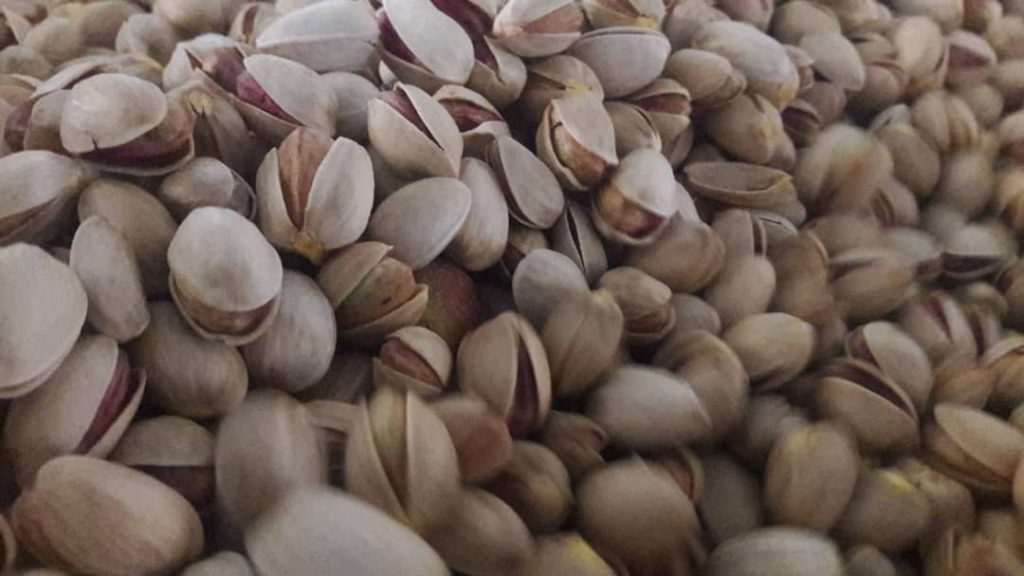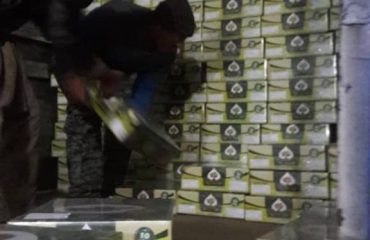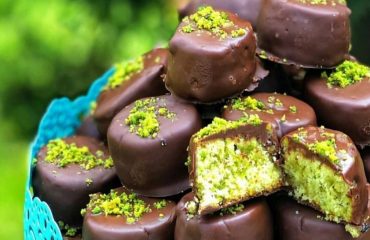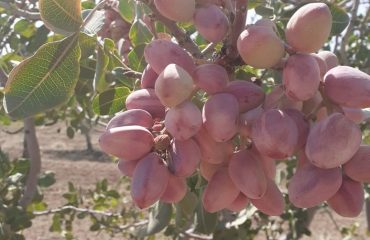The Iranians have been cultivating pistachios for thousands of years. It was found and founded in Turkey, Syria, Egypt and North Africa. In 1930, pistachio seeds were taken from Iran to the United States and planted in California.
At that time, pistachio was considered not as a commercial product but as a ceremonial and luxury commodity. Pistachio cultivation as an independent product started about 75 years ago in Rafsanjan and gradually in all of Kerman and other provinces. The country expanded.
Today, more than 200,000 tons of different types of pistachios are produced annually in Iran. Land preparation
In general, the best quality of pistachios is obtained in soils with uniform and deep sandy soil. In the United States, pistachio cultivation is restricted due to insufficient availability of such land.
Land evaluation for pistachio cultivation consists of two parts:
1. Evaluation of soil and water quality considering acceptable salinity and fertility
2. Physical assessment of soil in terms of stratification and drainage that may limit root growth. In the United States, the best area in terms of the above is the San Joaquin Valley in California.
Irrigation system:
The choice and design of irrigation system depends on the type of soil and topography of the land, but in general the following should be considered:
Irrigation in small blocks causes the soil to be uniform in terms of physical properties everywhere and water to be distributed evenly everywhere. Be.
– Slope and groove of the ground surface should be adjusted so that water flows easily on the ground.
– A water drain valve should be considered for each row of trees.
Leveling the ground:
Lands that are particularly prone to furrow irrigation should have a uniform slope. In general, any weeds, roots and other debris should be cleared before leveling operations. After irrigation, these substances remain moist and then begin to decompose anaerobically and produce methane gas, causing the concentration of manganese, iron and other soil compounds. Methane and manganese accumulated are toxic to the roots and cause The trees die.
The choice of irrigation system depends on the permeability of the soil, the area of the land and the degree of water pressure available. And depending on the need, any of them can be used.
It should be noted that after leveling operations, plowed land is poor in terms of substances such as phosphorus, potassium, nitrogen, zinc and sulfur, and therefore the soil should be enriched in this regard.
How to grow pistachios:
Pistachio trees have a long life, so spending time and attention in designing a pistachio garden can protect the gardener from years of failure in agriculture and prevent financial losses, and the gardener from quick return on investment, maximum yield and minimum spending. Make sure the cost.
The beginning of economic efficiency of pistachio orchards and the time when pistachios are needed to ripen is directly related to the number of trees that are planted per hectare. And if they are planted at large distances, reaching the maximum yield potential of the crop occurs later. Therefore, proper density and spacing during planting is very important.
In the United States, the distance between rows and pistachio trees, the space required to move the trees, and the size of the machine frame used for this purpose play an important role in determining the following:
The distance between the rows: should not be less than 6 meters so that the use of pruning and harvesting equipment is considered 6 meters. / Facilitate. Recently, the distance between rows should be a maximum of 7 4 meters in view / 5- The distance between trees in each row: In new pistachio orchards, a distance of 6 is taken between the trees. There is an increase in the cost of manpower for pruning because if the trees collapse, they will have trouble shaking and the harvester will not be able to do its job.
The pistachio industry is fledgling in the United States. The row shows that there is no problem in terms of density that has led to reduced yields, and the density of trees has been controlled through the use of mechanical pruners and manual pruning, and this is a testament to the appropriateness of the set intervals. Be.
Transplantation:
In California, at the beginning of the development and cultivation of a pistachio orchard, pistachio stems are planted in February or March and transplanted in late June, July, or early August. This is because it is usually done in the summer. It turns out that in this month, the new sprouts have matured and the skin of the pistachio stem has been activated. The red effects on the pistachio root are among the symptoms that this is 99% of the time. One of the methods A common and effective grafting method is used to create a T at the end of the plant stem. In this method, a slit and a patch are made and then the bud is placed inside it. Methods such as the one-piece method may also be used, in which part of the chips are removed instead of splitting the stem. These two methods are mostly used in the spring and are usually used in the United States. Not used.
Although rarely, standard cleavage and saddle cleavage methods are used to transplant pistachios, and if these two methods are used in late summer, the grafting will be more successful.
Pruning
Pruning trees has different purposes. One is to enclose the tree in a certain space. Second, it is done to renew the tree trunk and distribute light. The strengthening effect of pruning also helps to keep the tree healthy and long-lasting. It can also help to better harvest pistachios from the tree and less damage to harvesting equipment due to collisions with fallen branches. Finally, pruning Can be used to alleviate the one-year fruiting difference between trees.
In general, unpruned trees grow taller than pruned trees. Pruned trees are more vigorous because they have fewer growth points and relatively more nitrogen available to them. Incomplete pruning destroys the carbohydrates stored in the branches. Decreasing the number of leaves also causes less root growth. Summer pruning destroys the branches that the tree uses to produce energy.
Cutting and pruning methods:
It is used that (Heading) and (Thinning) in general to prune the cutting methods of the heading each have their own effects on tree growth. In the cutting method, some branches are cut from the bottom. Thinning is applied to the ends of the branches and is used in the cutting method compared to H to fill the tree and strengthen it. Heading cuts are a stronger method because beating the ends of the branches destroys more buds. The T brand also loses less stored carbohydrates due to the sharpening of the branches. On mature trees and for the transverse growth of 3 to 5 year old branches and reducing the length of branch H, annual cuttings are made at the top of the tree. However, in this method, at least one bud should remain in the branch. The next will be after fruiting.
Less sprouts and H carbohydrates are less invigorating and, of course, kill more cuts than T-cuts. These cuts are used to reduce the density of the branches and thus improve the brightness and increase the usefulness of the remaining branches. These cuttings are also used to manage trees that are flattened or too large for the harvester frame.
Manual pruning versus machine pruning:
T and H manual pruning allows each tree to be trimmed individually. Cuts can be used as needed to optimize the amount of light, stimulate new growth in low-lying areas, and control tree size.
Showed that in Western Kings County data collected from an experimental pruning actually hand-pruned pistachio trees for more than 6 years produced more smiling pistachios than machine-pruned trees on one or both sides. They produce.
The result of manual pruning by an experienced person is very different from that of a novice, and it is therefore very important that the pruner has a correct understanding of the type of pruning and what is required. It is best to divide this guide into 4 sections:
1. Eliminate broken, fallen and tangled branches
In order for all the branches to be straight and upright, so the branch
T -2 Using cuts that are less than 45 degrees are cut.
In places where the tree is low back
. H -3 Using slices
4. Use a pruner to prune annual branches growing on top of trees
Machine pruning is fast and inexpensive. The pruner consists of a saw blade and is struck. H All branches in the path of the machine are completely cut by the test cuts on the machine pruning, indicating that this operation must be done before the trees are compacted. Also, the garden floor should be flat and free of dimples. Small holes in the garden floor allow the saw blades to sink deep into the trees. For annual trees, it is better to use a 3-blade pruner mounted on a tractor. If cleaner cuts are needed, a 5-blade machine can be used, and the speed of the tractor must be adjusted so that the branches do not break before cutting on large branches.
Types of irrigation systems:
The systems used to irrigate the gardens are:
(Border irrigation systems) – Marginal irrigation systems
In this system, the area between the rows is filled with water.
In this system, instead of the entire area between the rows (Furrow) – furrow irrigation systems
Fill with water, grooves are created around the trees and water flows in these grooves.
. (Sprinkler) – Sprinkler systems
(Microirrigation) – Systems
Microirrigation is known as the most suitable system for irrigating pistachio orchards in California.
The following drip irrigation system (Surface drip) which includes surface drip irrigation system
Is. Microsprinkler and ground (Subsurface drip) system over other systems: Microirrigation distributes the benefits of the water system more evenly than other methods.
– Allows timely control of irrigation and can provide the required water according to the needs of the tree.
– Water flow is minimal and if the water velocity is adjusted correctly, water loss due to water penetration deep into the ground is minimized and intermittent irrigation will improve soil moisture.
– With this method, irregular lands can be easily irrigated. – Weed growth is minimized because only part of the soil gets wet.
(Surface drip) Drip irrigation of this system is one of the most common tree irrigation systems. Both single and double drip irrigation lines are used for irrigation. Double lines are usually chosen to irrigate a larger area of the garden or to increase irrigation speed. It is usually used in sandy soils that do not have good moisture. Increasing the speed of drip irrigation reduces the time required for irrigation, and of course the double irrigation line is more expensive than the single type.
Groundwater drip irrigation
This system has a long life and is usually installed at a depth of 10 to 24 inches.
The deeper it is, the less the ground gets wet, but the more difficult it is to install the pipes.
The advantage of this system is the reduction of weed growth because the ground surface is kept dry. Also, the possibility of damaging the pipes during harvest is very low, and of course, whenever it is necessary to irrigate, even during harvest, irrigation can be done with this system. Did.
The disadvantage of this method is that it is difficult to find the place of blockage of the pipes in the places where the roots have come into contact with the system. Of course, to solve this problem, herbicide amateurs can be used, which is a costly task.
Microsprinkler system
The advantage of this method compared to the drip method is that it irrigates a larger part of the land and because the holes are larger, it does not have the problem of clogging pores and obstruction. The disadvantage of this method is the increase in weed growth due to the large surface area. It gets wet from the ground. Another disadvantage of this method is that insects enter or lay their eggs in holes and block them.
Fertilizer:
Pistachio trees need 14 elements to grow and bear fruit. These elements are: high consumption elements (N, P, K, Ca, Mg, S), each of which and low consumption elements (Fe, Mn, Cl, B, Cu, Zn, Ni, Mo)
These elements are necessary for the special function of the plant. These nutrients also play an important role in tree resistance to pests and product quality.
If present in excess in soil or water (Cl, B, Na) plus elements such as can be toxic. So knowing how much the tree needs these elements
Nutrients enter the plant with water and through the roots. Plants that have brown roots have a higher absorption capacity due to their diameter and high rate of expansion. Soil type and depth are factors that affect the rate of plant root growth, pH of soil texture, soil moisture and thus affect the uptake of nutrients by the plant. Environmental factors such as temperature, disease, salinity and the presence of other ions in the soil are also effective factors. Absorb nutrients.
Nitrogen: (N)
Nitrogen is one of the most necessary fertilizers for pistachio trees.
This element is used for the synthesis that is necessary for the plant. Due to nucleic acid deficiency, amino acids and nitrogen acids reduce shoot growth. The branches are thinner, shorter and often their skin is reddish.
Young leaves, along with old leaves, begin to turn yellow and fall off, and the tree becomes sparse. The yield of the tree decreases.
Of course, too much or too little irrigation or plant pests can have such symptoms.
Potassium: (k)
This element activates many plant enzymes.
This substance regulates the opening of leaf pores and gas exchange. It is also effective in the formation of sugars and starches for protein synthesis and cell regulation. Pistachio trees absorb 200 pounds of potassium in the high-yield year and 100 pounds in the low-yield year.
Most of this potassium is stored in pistachio seeds and as a result it is separated from the tree at harvest time. Therefore, if potassium fertilizer is not given to the garden for a few years, the garden will be deficient in this substance after a while.
Potassium-deficient leaves show signs of deficiency in mid-summer. The leaves are pale and the edges of the leaves fold upwards and become a ring, appearing gray. These symptoms are more common on old leaves.
Trees grow slowly and produce smaller leaves. Trees that are not severely potassium deficient look normal but bear less fruit than they should.
Magnesium: (mg)
This substance is one of the activators of growth enzymes. Magnesium deficiency is not very common in pistachio trees and occurs mostly in sandy and acidic soils. Signs of deficiency appear in the middle of the season and on the lower leaves as yellow edges. The edges of the leaf may burn on the opposite side of the green V after a while, and the burn progresses inward, eventually leaving a color on the leaf. Then the burnt leaves begin to fall off. Magnesium deficiency may be confused with potassium deficiency. Leaf tissue analysis should be performed to ensure: Zinc: (ZN)
The third most common deficiency among pistachio trees is zinc deficiency. This substance is necessary for membrane cohesion and hormone synthesis and for the production of plant hormones and chloroplasts. Zinc deficiency is common in most areas where pistachios are grown. Most newly planted trees are prone to zinc deficiency. Symptoms of zinc deficiency occur in early spring and include the recent opening of growing buds, which can be as long as a month. Signs of frostbite appear on the trunks of annual trees when the buds open. The leaves are small and yellow. The zinc deficient leaves have wavy edges and the pistachio kernels are noticeably smaller and redder than normal. The number of pistachio seeds per cluster is reduced and most of them are hollow.
Zinc deficiency can be limited to a few branches of the tree and the rest of the tree is healthy. Boron: (B)
Boron is necessary for pistachio flowering and the ability to pollinate and pistachio. Symptoms of boron deficiency include dryness of the tips of the branches, incomplete buds, and eventually drying out. The leaves are yellow and serrated. The tips of the leaves are turned and deformed. The mature leaves become thick and if we touch them, they have a leathery state and gradually become brittle and fall off.
It should be noted that overuse of boron can be toxic.
Copper: (cu)
Copper deficiency is also very common in pistachios and, like zinc, often occurs in newly planted trees. Symptoms of copper deficiency appear in mid-summer. Immature leaves at the end of the branches first burn the tip and sometimes form a heart. The branches dry out a little and small dark lesions appear at the tips of the branches. In late summer, the branches dry out and the pistachio kernels wrinkle badly.
Harvesting
Pistachio harvesting in California begins with three factors.
The first factor is irrigation. The process of smiling pistachios is very sensitive to water supply failure. Therefore, irrigation should be done in such a way that the soil has enough moisture to smile pistachios and to use harvesting equipment, between Rows have the necessary dryness.
The second factor in preparing for harvest is that if the pistachios are infected with aflatoxin-producing fungi, spraying should be done one, fourteen and twenty days and one day before the initial harvest.
The third factor is to determine when the crop should be harvested.
In California, the harvest season is usually September. Signs of a pistachio harvest date are as follows:
The outer skin of pistachios is muddy and the hard skin of pistachios becomes dull from semi-transparent and smiles. When we press the pistachio between the fingers, the outer skin of the pistachio is easily separated from the pistachio kernel due to the increase in sugar and The fat becomes moist and the weight of the nuts increases. If we shake the trees, the seeds begin to fall off and the pistachios that remain on the tree are either hollow or their mouths are closed.
In California, pistachios under the age of 6 are usually harvested by hand. The tarpaulin is spread up to 1 meter under the tree and then hit by a tree trunk with a stick, and / within a radius of 5 pistachios begin to fall, so Since all the ripe pistachios have fallen from the tree, with the vertical movement of the tarpaulin, the debris and light pebbles are collected and they can be collected and then the pistachios are stored in wooden or plastic containers for further steps. They have every fresh pistachio. kg In these containers, mature pistachio trees are harvested with the help of mechanical machines. These machines, by shaking the tree, cause the pistachios to fall, collect the pistachios and throw them in special containers.
If there is a large time interval between harvesting and processing, the pistachio shells will be stained hard. So it is better to reduce this time interval as much as possible and if the delay is unavoidable, the containers containing pistachios will be kept in the shade High quality pistachios can be stored for up to 48 hours without staining their skin, but low-cooked pistachios even after 8 hours at 40 ° C and 24 hours at 30 ° C. Stained for 40 hours at 25 ° C.
Pistachio Processing Steps in California
In general, the process of processing pistachios in California can be summarized in the following steps:
1. Fresh pistachios are weighed and labeled.
2. Temperature is measured during loading.
. Airleg-3 Pistachios are transferred to the machine for decontamination
4. 9 kg sample is separated from unpeeled pistachios to be graded and processed separately.
5. Pistachios are peeled by an abrasive peeler.
6. Empty pistachios are separated by a pool of water and dried and stored separately.
7. Smiling pistachios and closed mouth are dried by a high temperature dryer until they reach a moisture content of 1312%.
8. Pistachios are transferred to silo containers for final drying.
9. Pistachios are stored at ambient temperature with a flow of compressed air (fan).
10. Smiling pistachios are separated from closed-mouth pistachios by needle rollers.
11. Smiling pistachios are classified by color with a color sorter.
12. Defective and unpeeled junk and pistachios are separated from smiling pistachios.
13. Smiling pistachios are salted.
14. Salted pistachios are roasted.
15. Roasted pistachios are packaged, stored or transported.




